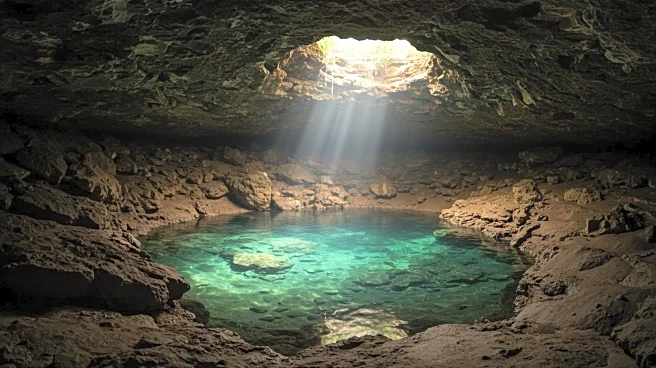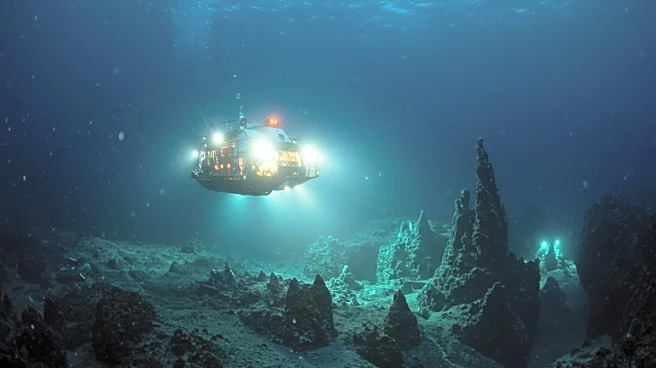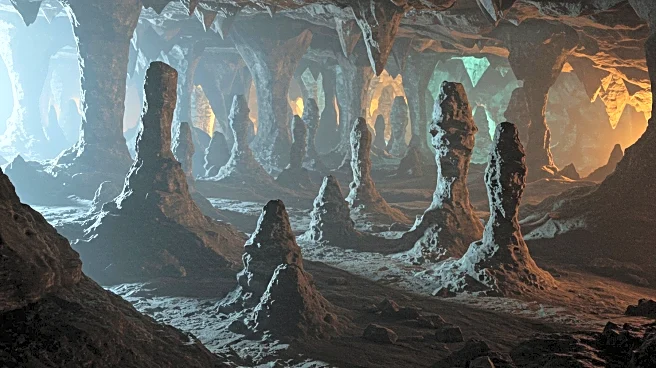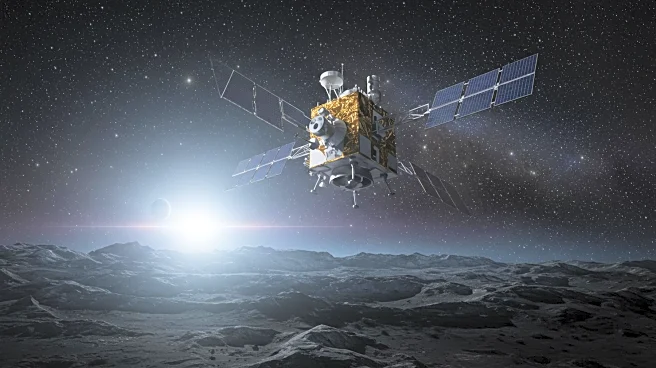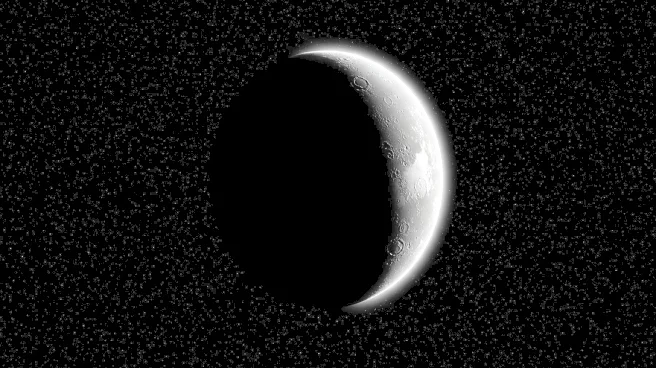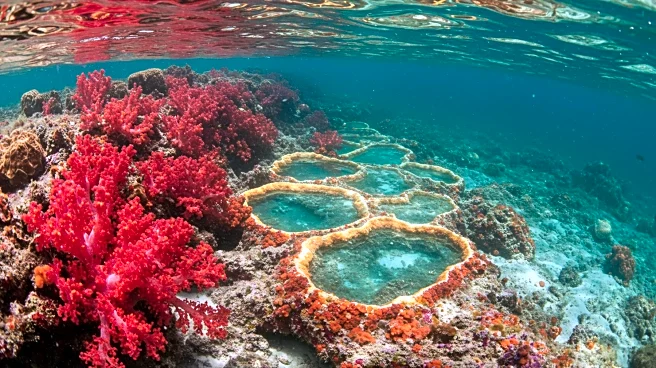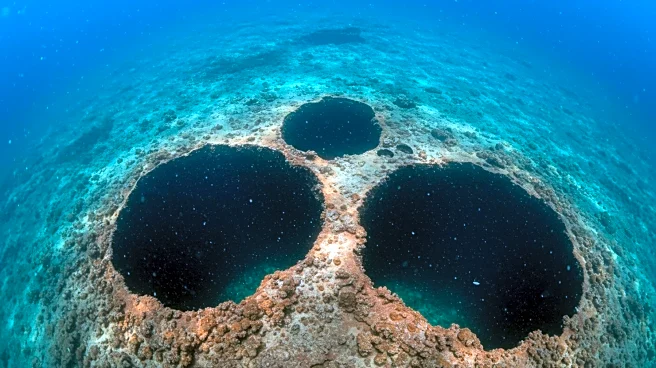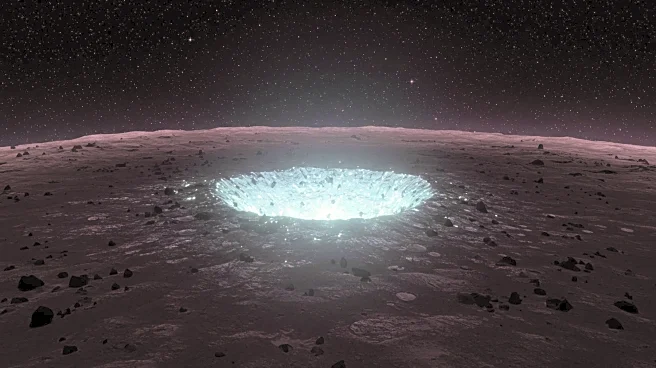What's Happening?
In 2016, geologists uncovered a remarkable geological phenomenon deep within a Canadian mine: a water source that has been trapped in rock for over 2.6 billion years. This discovery, published in the journal Nature, has provided unprecedented insights into the survival of ancient microbial life and the water's ability to exist without exposure to sunlight for such vast periods. The water, which is still actively bubbling from the depths of the mine, was found to be much more abundant than initially anticipated, flowing at rates of liters per minute. This finding has led scientists to explore significant questions about how water could remain trapped for such an extensive period while maintaining the potential for microbial life.
Why It's Important?
The discovery of this ancient water source is significant as it offers new insights into the resilience and adaptability of microbial life. The presence of sulfate in the water, bearing the distinctive fingerprints of microbial life forms, suggests that these communities survived without sunlight, relying instead on radiation from the surrounding rock to produce necessary nutrients. This finding not only enhances our understanding of Earth's deep biosphere but also has implications for the search for life on other planets. The ability of life to persist in such isolated and extreme conditions suggests that similar environments on other celestial bodies could potentially harbor life, expanding the scope of astrobiological research.
What's Next?
The discovery prompts further exploration into the chemical processes that sustain life in such ancient water sources. Researchers are likely to continue studying the water's chemical composition to understand the long-term survival mechanisms of microbial life. Additionally, this finding may influence future astrobiological missions, as scientists seek to identify similar environments on other planets or moons where life could exist. The study of these ancient waters could also lead to advancements in understanding Earth's geological history and the evolution of its biosphere.
Beyond the Headlines
This discovery raises ethical and philosophical questions about the definition of life and its potential ubiquity in the universe. The ability of life to thrive in such extreme conditions challenges traditional notions of habitability and suggests that life could exist in forms and places previously considered unlikely. This could lead to a paradigm shift in how scientists approach the search for extraterrestrial life, focusing on environments that are chemically rather than sunlight-driven.
